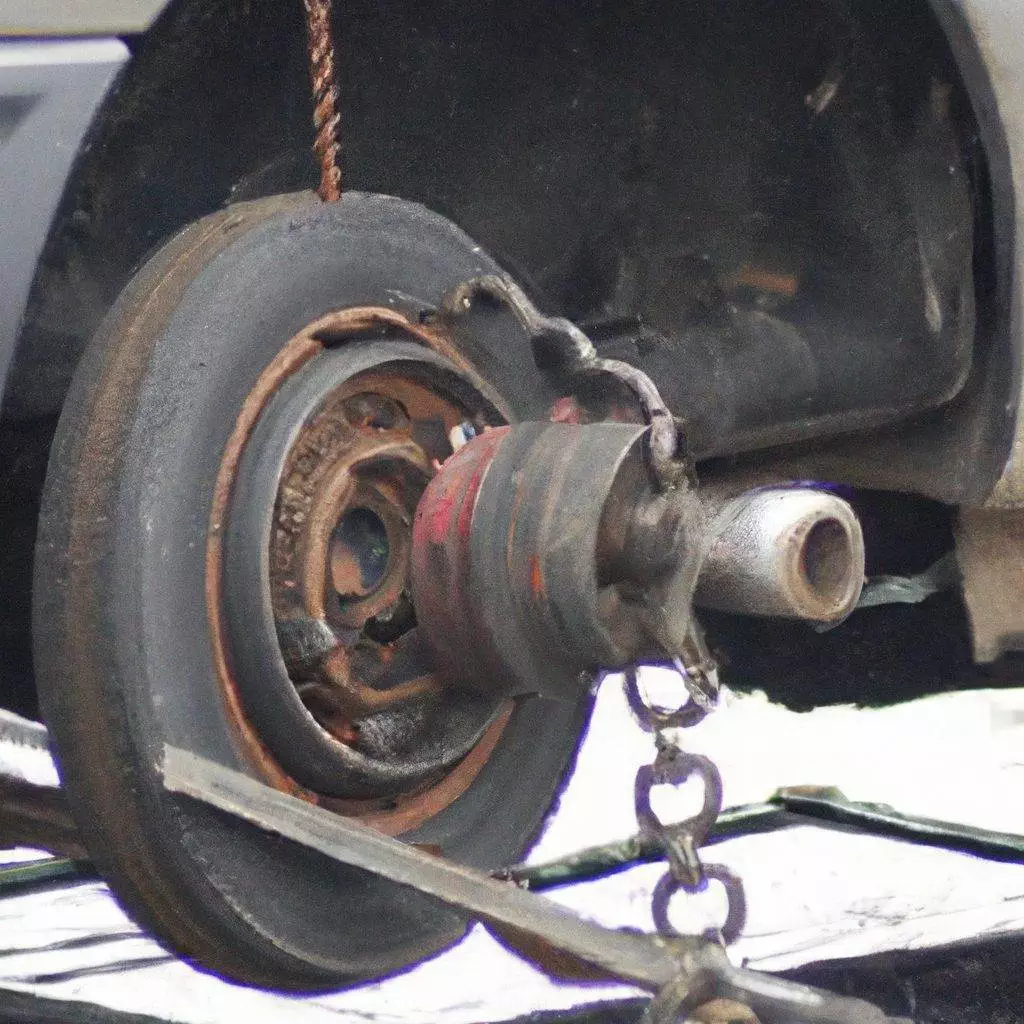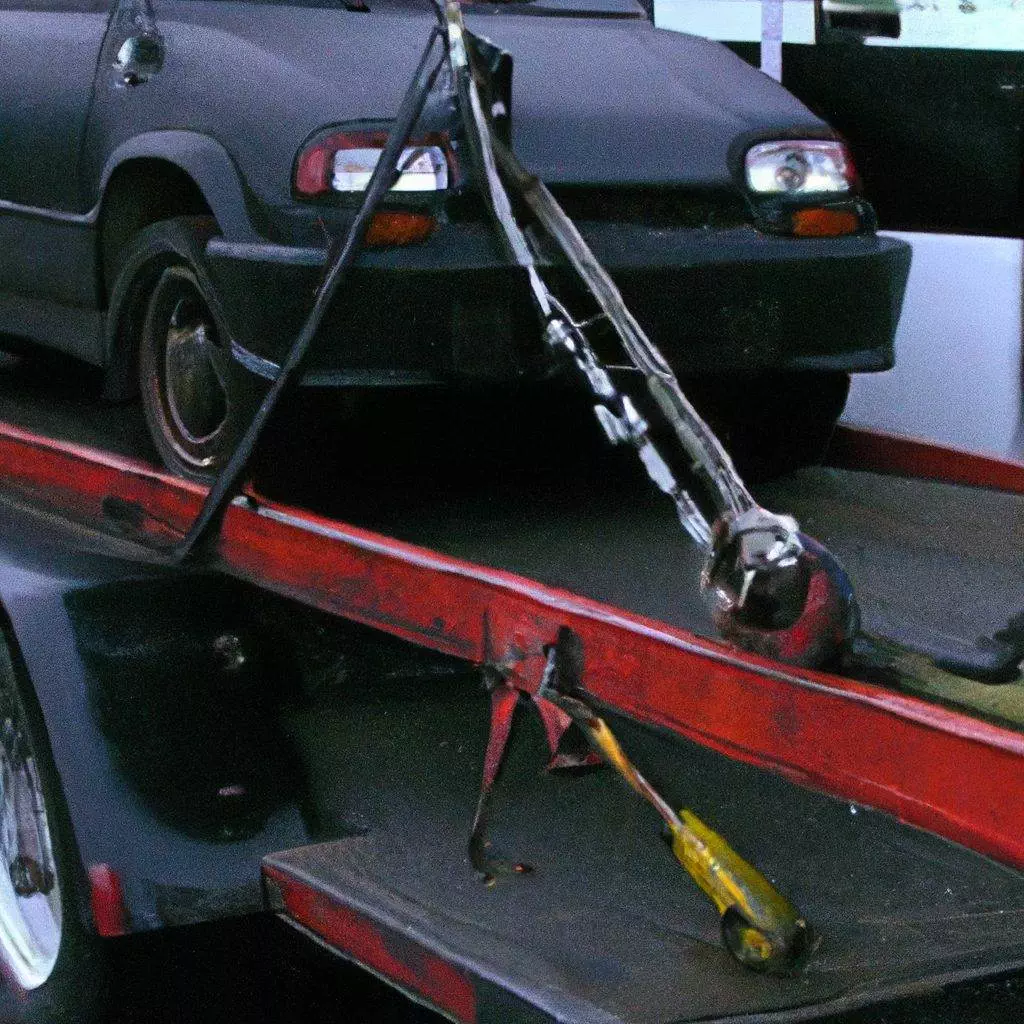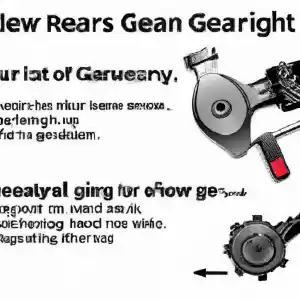Towing can wreak havoc on your vehicle’s transmission, causing severe damage that can be both expensive and frustrating to repair. The significant strain placed on the transmission while pulling a load, especially if it exceeds the recommended weight limit, can lead to overheating, excessive wear and tear, and even complete failure of this vital component. Understanding the factors that contribute to transmission damage during towing is crucial for all vehicle owners to ensure the longevity and functionality of their vehicles. Towing can cause significant damage to your vehicle’s transmission for a variety of reasons. Understanding these reasons is crucial to prevent costly repairs and ensure the longevity of your transmission. In this article, we will explore the key factors that contribute to transmission damage during towing and provide valuable insights on how to mitigate these risks.

Excessive weight and strain on the transmission
When you engage in towing activities, you expose your vehicle’s transmission system to excessive weight and strain. The transmission is responsible for transmitting power from the engine to the wheels, and towing places an additional burden on this vital component.
To prevent potential damage, it is essential to understand your vehicle’s towing capacity. Every vehicle has a specific towing capacity, which refers to the maximum weight it can safely tow. Exceeding this limit puts immense strain on the transmission, engine, and other crucial components, significantly increasing the risk of damage.
To determine your vehicle’s towing capacity, refer to the Gross Combined Weight Rating (GCWR). This rating includes the weight of the vehicle, passengers, cargo, and the trailer being towed. It is crucial to stay within this limit to ensure a safe and smooth towing experience.
Overheating of the transmission
Another major concern during towing is the overheating of the transmission. Towing increases the workload on the transmission, causing it to generate more heat than usual. Sustained overheating can lead to severe damage to transmission components and may even result in a complete transmission failure.
Maintaining an optimal transmission temperature is crucial to prevent overheating. It is recommended to install an auxiliary transmission cooler, especially if you frequently engage in towing activities. This additional cooler helps dissipate the excess heat generated during towing and keeps the transmission within safe temperature limits.
Symptoms of an overheating transmission include a burning smell, slipping gears, erratic shifting, and fluid leaks. If you notice any of these signs, it is essential to address the issue promptly and investigate the root cause of the overheating.
To prevent transmission overheating, ensure proper airflow around the transmission cooler, avoid excessive loads or steep inclines, and consider installing a transmission temperature gauge to monitor the transmission’s temperature during towing.
Lack of proper maintenance
Regular maintenance is vital to keeping your transmission in optimal condition, especially when it comes to towing. Neglecting routine maintenance tasks significantly increases the risk of transmission damage during towing.
Scheduled transmission fluid changes are one of the most critical maintenance procedures. Over time, transmission fluid breaks down and becomes contaminated with debris, which can compromise its lubricating and cooling properties. This is particularly problematic during towing, as the transmission is subjected to increased stress and heat.
To prevent damage, follow the manufacturer’s recommended fluid change intervals. Regular fluid changes ensure that the transmission operates smoothly and efficiently, reducing the risk of overheating and premature wear.
In addition to fluid changes, regular inspections are essential to identify any potential issues before they escalate. Professionals can inspect the transmission for leaks, check fluid levels, and assess the overall condition of the components. Timely detection of problems can save you from expensive repairs and prevent further damage to the transmission.
Inadequate towing equipment
Using the right towing equipment is crucial to ensure the safety of your vehicle, the trailer, and the transmission. Inadequate or mismatched equipment can put unnecessary strain and stress on the transmission, leading to potential damage.
Before towing, it is important to assess the compatibility of your vehicle and the towing equipment. The correct hitch, receiver, and ball size must be used, along with appropriate weight ratings that match the towing load. Failing to use the correct equipment can result in improper weight distribution, uneven forces on the transmission, and increased stress on other components.
To prevent damage, consult your vehicle’s manual or seek professional guidance to ensure you have the appropriate towing equipment for your specific vehicle and load. Investing in high-quality towing equipment that meets the necessary safety standards is crucial to prevent potential transmission damage.

Stress on the drivetrain
During towing, not only is the transmission under stress, but the entire drivetrain is also subjected to increased strain. The drivetrain includes components such as the driveshaft, axles, and differential, all of which work in conjunction with the transmission to transfer power to the wheels.
Towing places significant stress on the drivetrain, particularly when hauling heavy loads or traveling over challenging terrains. The additional weight and strain can lead to accelerated wear and tear on these components, potentially causing drivetrain damage.
Symptoms of drivetrain damage include unusual noises, vibrations, and difficulty in engaging gears. If you experience any of these signs, it is crucial to have the drivetrain inspected by a professional to identify and address the underlying issues.
To prevent drivetrain damage during towing, it is important to ensure that all drivetrain components are properly lubricated and maintained. Regular inspections, fluid changes, and addressing any issues promptly can help protect your drivetrain and prevent costly repairs.
Operating in the wrong gear
Using the wrong gear while towing can have detrimental effects on your transmission. Operating in an incorrect gear can lead to excessive strain, increased fuel consumption, and potential damage to the transmission.
Towing in “Overdrive” or using higher gears for prolonged periods places excessive stress on the transmission. Overdrive is designed for fuel efficiency during regular driving conditions, but it may not provide the necessary power and torque required for towing. This can lead to overheating, increased wear, and decreased transmission lifespan.
To ensure your transmission remains protected, it is essential to use the proper gears while towing. Lower gears provide better control and torque, allowing the transmission to handle the additional load more effectively. Consult your vehicle’s manual or seek professional advice to determine the appropriate gear for towing based on the weight and terrain.
By avoiding unnecessary strain on the transmission and using the correct gears, you can significantly reduce the risk of transmission damage during towing.
Improper weight distribution
Proper weight distribution is essential for safe towing and protecting your transmission. Incorrectly loaded trailers can exert uneven forces on the transmission, leading to increased stress, instability, and potential damage.
When loading a trailer, it is important to distribute the weight evenly and ensure that the load is not concentrated at either end. Uneven weight distribution can cause the trailer to sway, resulting in additional strain on the transmission. Additionally, an unbalanced load can affect the steering and braking capabilities of the towing vehicle, further compromising safety.
To achieve proper weight distribution, it is advisable to use a weight distribution hitch. This hitch helps distribute the weight evenly across the towing vehicle and trailer, improving stability and reducing strain on the transmission. Follow the manufacturer’s instructions for proper installation and adjustment of the weight distribution hitch to maximize its effectiveness.
Excessive shifting
Frequent gear shifting, especially during towing, can accelerate wear and tear on the transmission. Excessive shifting places additional stress on the transmission’s internal components, potentially leading to premature failure.
Smooth shifting is crucial to minimize the strain on the transmission. Abrupt shifts, especially from higher to lower gears, can cause unnecessary shock and strain on the transmission. Additionally, downshifting and utilizing engine braking techniques can help mitigate the risk of excessive stress on the transmission.
If your vehicle is equipped with a tow-haul mode, utilizing this feature can optimize shifting patterns while towing. Tow-haul mode modifies the shift points and torque converter lockup, providing better responsiveness and reducing the need for frequent and abrupt shifting.
Neglecting transmission fluid changes
Regular transmission fluid changes play a vital role in maintaining the health of your vehicle’s transmission. Neglecting these essential maintenance tasks can have severe consequences, especially when it comes to towing.
Over time, transmission fluid becomes contaminated with debris, sludge, and worn-out particles. These contaminants can hinder proper lubrication, cooling, and hydraulic functions, leading to increased friction, overheating, and premature wear on transmission components.
Maintaining clean and fresh transmission fluid is particularly important during towing when the transmission is subjected to increased stress and heat. Regular fluid changes help ensure that the transmission operates smoothly, reducing the risk of overheating and excessive wear.
It is crucial to follow the manufacturer’s recommended fluid change intervals to ensure optimal transmission performance. Additionally, if you frequently engage in towing activities, you may need to change the transmission fluid more frequently to maintain its integrity and protect your transmission from damage.
In conclusion, towing can damage your vehicle’s transmission if proper precautions and preventive measures are not taken. Excessive weight and strain, overheating, inadequate maintenance, improper equipment, stress on the drivetrain, incorrect gear selection, improper weight distribution, excessive shifting, and neglecting transmission fluid changes are all factors that contribute to transmission damage during towing.
By understanding the potential risks associated with towing and implementing the necessary precautions, you can safeguard your transmission and enjoy a safe and efficient towing experience. Regular maintenance, proper gear selection, using the correct towing equipment, and ensuring proper weight distribution are essential steps to mitigate the risks and protect your transmission from damage. Remember to consult your vehicle’s manual and seek professional advice to ensure you are following the recommended guidelines for towing with your specific vehicle.


